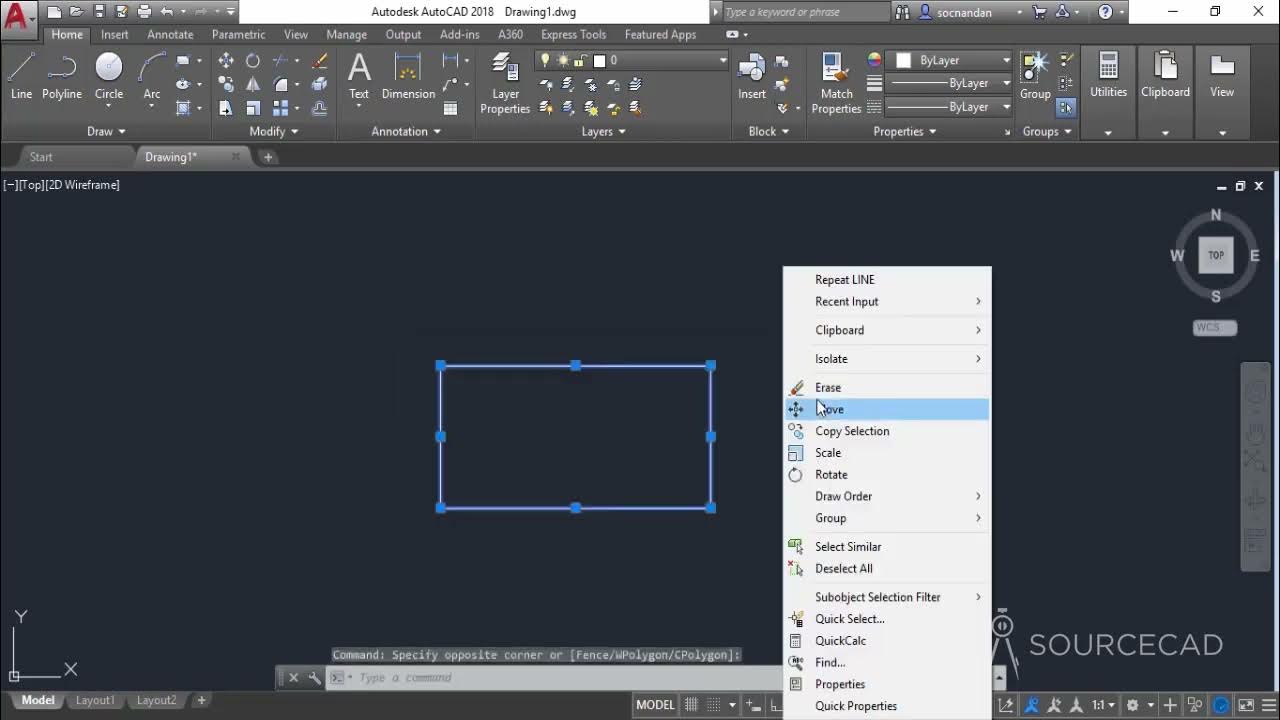Example: Identify 4 Possible Polar Coordinates for a Point Using Radians
Summary
TLDRThis script explains how to represent a point in four different ways using polar coordinates. It covers scenarios where the radial distance (r) is positive or negative, and the angle (theta) is positive, negative, or zero. The explanation includes converting angles from degrees to radians and vice versa, and how to find co-terminal angles by adding multiples of 2π radians.
Takeaways
- 📍 Polar coordinates express a point as an ordered pair (r, θ), where r is the directed distance from the pole and θ is the directed angle from the +x-axis.
- 🔢 When r is positive, the point lies in the standard position where the terminal side of θ passes through the point.
- 🔄 The least positive angle for θ when r is positive can be calculated as 180° + 45° = 225°, or in radians, 5π/4.
- 🔁 Any co-terminal angle, which can be found by adding multiples of 2π radians to the least positive angle, is valid for θ when r is positive.
- 📉 If r is negative, the angle θ must rotate clockwise from the standard position to point towards the point.
- ⏲️ For a negative r, the least positive angle for θ is 45° or π/4 radians, and the negative angle would be -135° or -3π/4 radians.
- 🔀 Subtracting multiples of 2π radians from the negative angle gives other valid negative angles for θ.
- 🔄 When r is negative, the point lies on the ray pointing in the opposite direction of the terminal side of θ.
- 🔄 The least positive angle for θ when r is negative is 45° or π/4 radians, and the negative angle is -315° or multiples of -π/4 radians.
- 🔁 Any angle co-terminal with the calculated angles for θ is also correct when r is negative.
Q & A
What are polar coordinates?
-In polar coordinates, a point is expressed as an ordered pair (r, θ), where r represents the directed distance from the pole, and θ is the directed angle from the positive X-axis.
How do you determine the value of r when r is positive?
-When r is positive, you count the number of units from the pole to the point. In this example, r equals 5 because the point is 5 units away from the pole.
What is the value of θ when r is positive?
-When r is positive, θ is the angle in standard position where the terminal side passes through the point. The least positive angle for the point is 225 degrees or 5π/4 radians.
How can you find other possible values for θ when r is positive?
-You can add multiples of 2π radians to the base angle to find co-terminal angles. For example, adding 2π to 5π/4 radians will give you another valid angle for θ.
What is the negative value of θ when r is positive?
-The negative value of θ would be a clockwise rotation from the positive X-axis to the point. This gives a value of -135 degrees or -3π/4 radians.
How do you find negative angles co-terminal with a given negative θ?
-To find co-terminal negative angles, subtract multiples of 2π radians from the given negative angle.
What happens when r is negative?
-When r is negative, the point lies on the ray pointing in the opposite direction of the terminal side of θ. For example, r = -5 means the point is still 5 units away from the pole but in the opposite direction.
What is the value of θ when r is negative?
-When r is negative, the least positive angle for θ would be 45 degrees or π/4 radians, as the terminal side must point in the opposite direction.
What is the negative value of θ when r is negative?
-The negative value of θ when r is negative would be a clockwise rotation to the point, which gives -315 degrees or -7π/4 radians.
Can you have multiple values for θ when r is negative?
-Yes, any angle co-terminal with the base angle is valid. You can find these angles by adding or subtracting multiples of 2π radians.
Outlines

Cette section est réservée aux utilisateurs payants. Améliorez votre compte pour accéder à cette section.
Améliorer maintenantMindmap

Cette section est réservée aux utilisateurs payants. Améliorez votre compte pour accéder à cette section.
Améliorer maintenantKeywords

Cette section est réservée aux utilisateurs payants. Améliorez votre compte pour accéder à cette section.
Améliorer maintenantHighlights

Cette section est réservée aux utilisateurs payants. Améliorez votre compte pour accéder à cette section.
Améliorer maintenantTranscripts

Cette section est réservée aux utilisateurs payants. Améliorez votre compte pour accéder à cette section.
Améliorer maintenantVoir Plus de Vidéos Connexes

Polar Coordinates Basic Introduction, Conversion to Rectangular, How to Plot Points, Negative R Valu

Coordenadas Polares ¿Qué son? EXPLICACIÓN COMPLETA

TRIGONOMETRI (Konversi Koordinat Kutub Ke Koordinat Kartesius)

September 1, 2025

Konversi Koordinat Cartesius ke Koordinat Kutub/ Polar dan Sebaliknya

Converting Rectangular to Polar Coordinates and Vice Versa (Tagalog/Filipino Math)
5.0 / 5 (0 votes)
